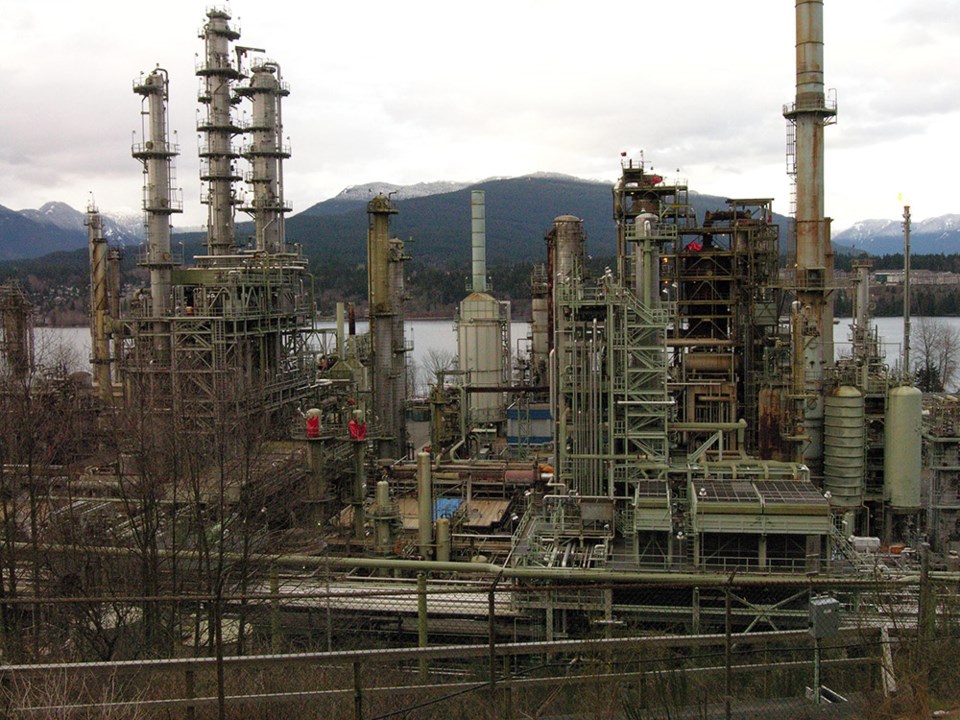Burnaby’s Chevron refinery is still waiting on final test results to determine what, exactly, was in roughly 30,000 litres of “dirty” water spilled last Friday morning.
Chevron spokesperson Dave Schick said the water was set to undergo a second stage of treatment before it spilled.
“It’s not clean water,” Schick said. “We’re finishing cleaning it up.”
Schick said there’s no threat to human health or the environment. He said water has dissolved hydrocarbons in it but no “free oil,” meaning there were no visible signs of oil, like sheen, for example.
“We’re waiting (for) tests to confirm the composition,” he said. “It’s largely water, … but we don’t want the water to get off the site till we’re guaranteed what the composition is.”
According to Schick, the water spilled Friday morning, around 6:30 a.m., and Chevron alerted the provincial Environment Ministry early in the afternoon.
It’s not clear how it spilled, but Schick indicated it may have happened while the refinery was pumping water from one containment pond to another. Chevron contractors with a vacuum truck recovered 10,000 litres of the dirty water, but the rest, an estimated 20,000 litres, went into the ground, Schick explained. Schick said the water was used in the refinery’s cooling process, and after the second stage of treatment, it goes into the sewer system.
The refinery sits on the edge of the Burrard Inlet, and the railway tracks run between the refinery and the beach below. Schick said there’s no indication the water made it past the railway tracks, but he also said he wasn’t sure of that.
On Tuesday morning, Schick said initial test results were showing what the company expected, but he didn’t wanted to comment until the remaining soil test results come in, likely in a couple of days.
The refinery may need to remove some soil on the site, Schick explained, depending on what the test results show.
The Environment Ministry’s Dave Karn sent the NOW an email stating the spill was primarily water effluent in its final stage of treatment, and the potentially affected ground area is not accessible to the public.
“The company responsible has and is taking action to deal with the situation, including taking samples in the affected area and implementing spill containment,” the email reads.



